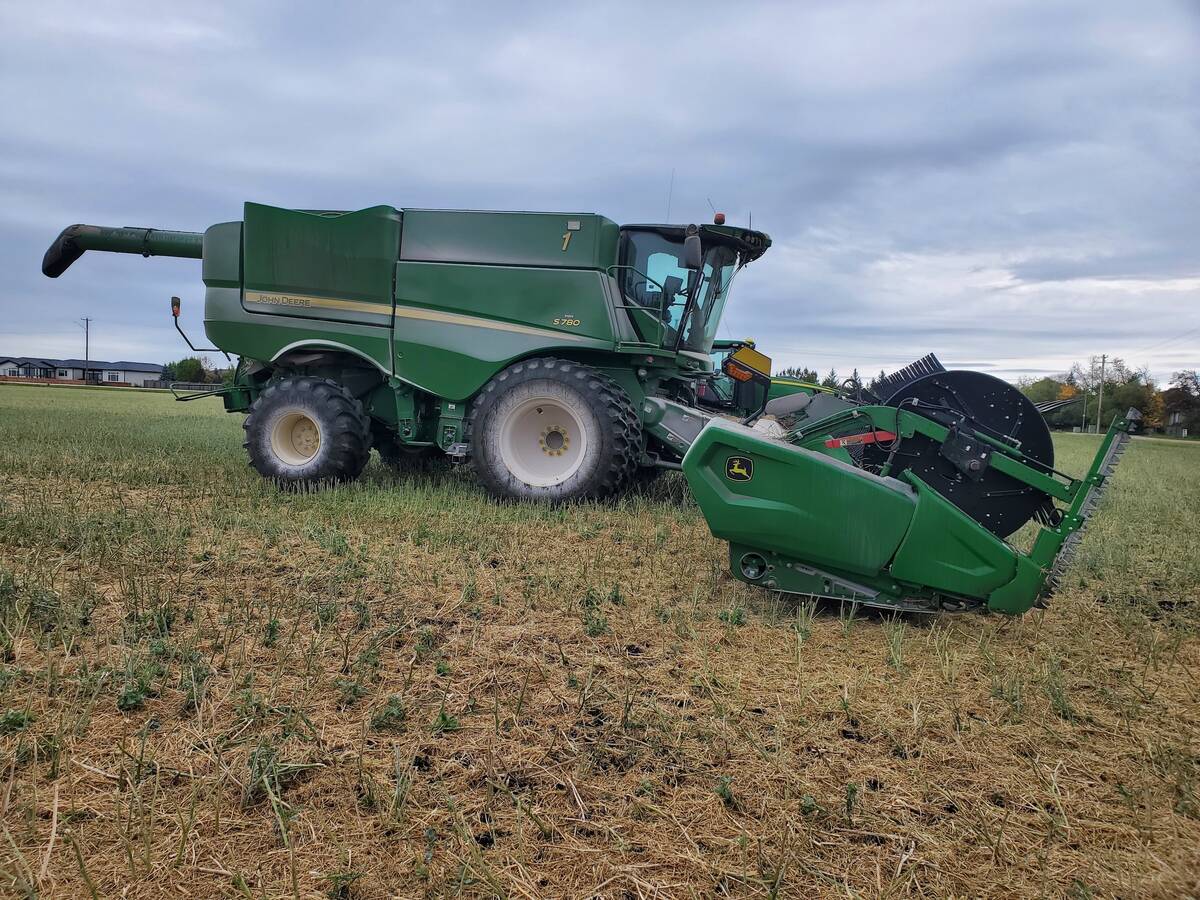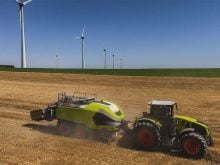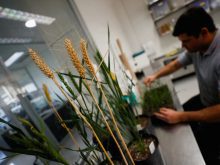Neudorf, Sask.
If an advertising agency had to pick a location to shoot an ad promoting the Canadian farm lifestyle, the field behind Paul and Ruth Mitchell’s farmyard would definitely be in the running.
Read Also

Powdery mildew can be combine fire risk
Dust from powdery mildew can cause fires in combines.
Black Angus cattle grazing on golden stubble, an easy roll of the land and spruce trees in the distance make the scene easy on the eyes.
That natural beauty and open space is one of the reasons the couple emigrated from West Yorkshire, England, in 2005 to start their own farm in Saskatchewan. They moved with their two sons, Jacob and Adam, and now have a third child, two-year-old Amelia.
On their farm 20 kilometres southwest of Melville, the Mitchells grow grain on 1,000 acres and have built up a 100 head cow-calf operation.
They don’t regret leaving the hectic pace of life in their homeland, because the rural Saskatchewan lifestyle has met their expectations.
However, over coffee at the Mitchells’ kitchen table, Paul admitted that making a living at farming in Canada is more challenging than he expected.
“We haven’t actually made lots of money,” he said, which is why he has an off-farm job installing ceramic tile and a small business selling Japanese mini-trucks.
“We’re about breakeven but don’t seem to be able to make a reasonable wage on the farm side of it.”
Doing things other than farming is not a huge adjustment for Paul, who ran his own home-building business in Britain. Although that enterprise was successful, at one point employing 25 people, Paul always dreamed of farming.
As a teenager he milked cows after school and as a young man in the 1970s he attended agricultural college. Following graduation he worked for five years on a farm where he was responsible for 300 head of cattle.
That lifelong interest in cattle and farming convinced him to sell his business and invest in his own farm in Canada. Although farming wasn’t Ruth’s passion, she had grown weary of life’s fast pace in England.
“It was a joint decision I suppose,” she said.
“For me, it was a lifestyle (choice) for the kids.… I think it’s a safer environment. The kids, they go outside and they play and I know they’re going to be OK.”
Also, the daily grind of fighting traffic in England was getting to Ruth.
“As silly as it sounds … when you go to Yorkton it takes you 40 minutes and you know (it will be) exactly 40 minutes,” she said.
While the slower pace of life has been rewarding, the Mitchells have had to adjust their expectations to the financial realities of operating a farm in Canada. Paul now understands that off-farm work is the norm on the Prairies.
“You look at the local farmers close by … if there isn’t the wife working, the husband goes out and works.”
What is irksome, nonetheless, is the gap between reality and the tales Canadian real estate agents tell when they travel to Britain to promote farming on the Prairies.
“The figures that they’re giving back in Britain are at the higher level. They don’t give what can happen in the worst scenario,” he said.
Considering that a typical European farmer invests $1 million or more into their new Canadian farms, Paul said they should know that the investment doesn’t come with a guaranteed and reasonable annual income.
Despite that frustration, the Mitchells have come to understand the basic philosophy of the Canadian farmer.
“Every farmer you talk to, they always say next year, next year,” Paul said with a laugh.
Along with an easygoing attitude, the Mitchells are also taking pragmatic steps to manage their farm and their lives in Saskatchewan.
“We’re looking at a different sort of plan of attack,” he said.
“Last year we rented our grain land out and just concentrated on the cattle side.”
The Mitchells didn’t like the uncertainty at the core of grain farming. As well, Paul prefers working with cattle.
Since arriving in Canada, he has converted what was a straight grain farm into a cattle operation. He built a feedlot with wind shelters, loading gates and other infrastructure 200 metres north of their farmhouse.
He has focused on building up his reputation as a breeder of pedigree Black Angus bulls.
“It’s a hard market to get into and we struggled for the first three years selling bulls. But last year we ran out of bulls. We sold 16 bulls last year.”
When the Mitchells moved to Canada, they said they would re-evaluate their decision after five years. Now that they’ve reached the five-year mark, there are no plans to return to England.
They do miss certain things from home, such as English football and fish and chips. They haven’t become Saskatchewan Roughrider fans and Ruth hasn’t developed a love for a prairie staple.
“Perogies don’t exist in England,” she said.
“I can give them a miss.”

















